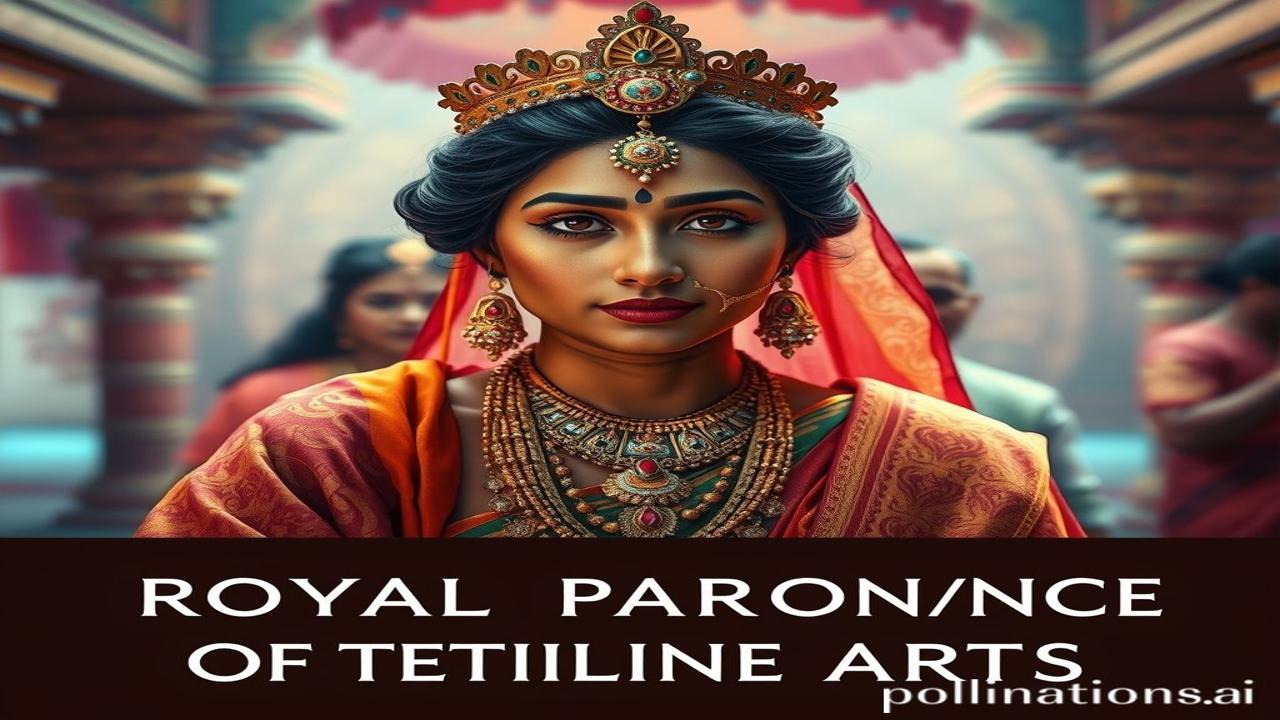रेशम की कहानियाँ, राजाओं की ज़ुबानी: Royal Patronage of Textile Arts in India
Kabhi socha hai, woh resham ki saree jo aapki dadi ne pehni thi Diwali pe, uski kahani kahan se shuru hui thi? Kya kabhi socha hai, woh intricate designs, woh rangon ka jaadu, kitne haathon se guzar kar aap tak pahuncha hai? Waqt ki dhool mein chhupi hai yeh kahaniyan, raja-maharajaon ke shauk aur unke darbaron ki… aaiye, zara kareeb se dekhte hain.
इतिहासिक पृष्ठभूमि / Historical & Cultural Context
Royal Patronage of Textile Arts – matlab, raajaaon aur raajkumaroon dwara kapdon ki kala ko badhaava dena. Yeh sirf kapda nahin tha, yeh ek expression tha, ek darpan tha, us zamaane ki culture aur prosperity ka. Imagine this – From the Mughal emperors adorning themselves in fine muslin to the Rajput queens draped in vibrant bandhani, textile arts were not just a necessity but a symbol of power and prestige.
Iska origin hamare itihas mein bahut gehra hai. Starting with the Indus Valley Civilization (3300-1300 BCE), jahan cotton cultivation ke saboot mile hain, Indian textiles hamesha se hi important rahe hain. Later, Maurya, Gupta, and then the Delhi Sultanate – har ek ne apne tareeke se is kala ko push kiya. But it was the Mughals who took it to a whole new level.
Why is it important? Because textiles are not just about cloth; they are about our identity, our tradition, and our artistry. They tell the stories of our ancestors, their skills, and their beliefs. Yeh ek aisi “dhrohar” hai jo generations se chali aa rahi hai.
ज़मीनी सच – लोग और जीवन / Deep Dive with Human Element
Imagine a weaver, Rahim Chacha, hunched over his loom in Varanasi. His fingers dance across the threads, weaving intricate brocade patterns. His father taught him, and his father before him. He is not just making cloth; he is creating art, carrying forward a family legacy. He worries about his son, whether he will choose to continue the tradition, or seek his fortune in the city.
Meanwhile, in a royal court in Rajasthan, Rani Saheba is choosing the fabrics for her daughter’s wedding trousseau. She wants something special, something that will reflect her daughter’s beauty and grace. She calls for the most skilled artisans, discussing designs, colors, and the meaning behind each motif.
“Ma Rukmini ne aaj naye kapde pehne, kyunki mandir mein utsav tha…” The colors, the textures, the craftsmanship – it was all a part of their daily life, a reflection of their social standing and their cultural values.
धरोहर और पहचान / Cultural Significance Today
Aaj bhi, Indian textiles ki duniya mein ek alag hi jadu hai. From the bustling markets of Delhi to the rural villages of Gujarat, we see the echoes of royal patronage in the intricate designs, the vibrant colors, and the skilled craftsmanship.
Think about it – the Kanjeevaram silk sarees worn during weddings, the bandhani dupattas adorning young girls, the intricate embroidery on Kashmiri shawls – these are not just pieces of cloth; they are symbols of our “Bharatiyata” (Indianness) and our modern identity. They connect us to our roots, reminding us of the rich and diverse heritage we have inherited.
मजेदार तथ्य या भ्रम-भंजक / Fun Fact or Myth-Buster
Log samajhte hain ki Mughal emperors sirf luxurious silks mein interested the, lekin asli sach yeh hai ki they also promoted the use of locally produced cotton and other indigenous fabrics. Akbar, in particular, encouraged the development of new weaving techniques and the establishment of textile workshops across his empire.
Ek aur interesting fact: Did you know that some Indian textiles were so fine that they were said to be “woven air”? Imagine a muslin so delicate that it could pass through a finger ring!
दृश्य और भावनाएं / Visual & Sensory Layer
The air in the textile workshop smells of dyes and natural fibers. The temple walls feel cool to the touch, adorned with intricate carvings depicting scenes from Hindu mythology. The sounds of the loom echo in the streets, a rhythmic symphony of creation.
Imagine the feel of raw silk against your skin, the vibrant colors shimmering in the sunlight. The textures, the patterns, the sheer beauty of Indian textiles – it’s an experience that engages all your senses.
अंतिम विचार या उद्धरण / Closing Insight or Quote
Textiles are not just objects; they are stories woven in threads, a reflection of our past, a celebration of our present, and a promise for our future.
“वस्त्रं हि केवलं न स्यात्, संस्कृतिः सा सनातनः” – Cloth is not merely an object; it is an eternal culture.
